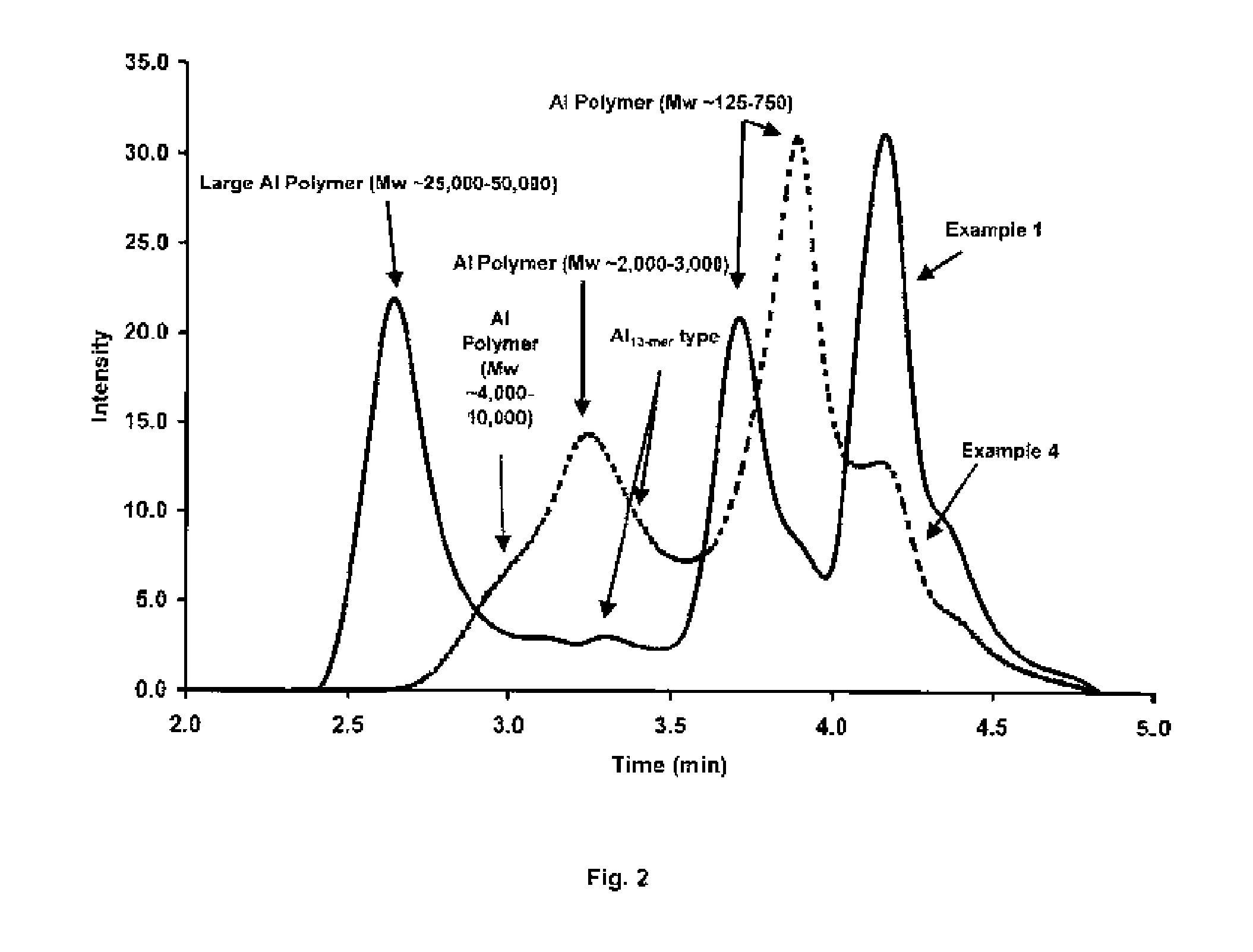Process for producing stable polyaluminum hydroxychloride and polyaluminum hydroxychlorosulfate aqueous solutions
- Summary
- Abstract
- Description
- Claims
- Application Information
AI Technical Summary
Benefits of technology
Problems solved by technology
Method used
Image
Examples
example 1
[0020] 188 g of aluminum chloride is mixed with 120 g of water and 11 g of sulfuric acid (98%) at ambient temperature. The reaction mixture is heated to 50° C.-60° C. and 12 g of aluminum powder is added over a period of 2 hours. The reaction is continued for an additional 4 hours and then cooled to 25° C. 125 g of sodium carbonate solution (11.74% w / w) and 44 g of sodium bicarbonate were added over a 2 hour period. The mixture is stirred and filtered after dissolution of suspended material, resulting in a clear solution containing 10.65% Al2O3, 9.70% Cl, 1.97% SO4, and a 70.5% basicity.
example 2
[0021] 160 g of aluminum chloride is mixed with 95 g of water and 8.2 g of sulfuric acid (98%) at ambient temperature. The reaction mixture is heated to 50° C.-60° C. and 13 g of aluminum powder is added over a period of 1 hour. The reaction is continued for an additional 12 hours and then cooled to 30° C. 104 g of sodium carbonate solution (22.0% w / w) is added over a 1.5 hour period. The mixture is stirred and filtered after dissolution of suspended material, resulting in a clear solution containing 10.91% Al2O3, 9.55% Cl, 2.10% SO4, and a 68.8% basicity.
example 3
[0022] 160 g of aluminum chloride is mixed with 49 g of water and 8.2 g of sulfuric acid (98%) at ambient temperature. The reaction mixture is heated to 50-60° C. and 13 g of aluminum powder is added over a period of 1 hour. The reaction is continued for an additional 12 hours and then cooled to 30° C. 15 g of water is added, followed by 171 g of sodium carbonate solution (22.0% w / w) over a 2.5 hour period. The mixture is stirred and filtered after dissolution of suspended material, resulting in a clear solution containing 10.0% Al2O3, 8.81% Cl, 1.92% SO4, and a 80.0% basicity.
PUM
 Login to View More
Login to View More Abstract
Description
Claims
Application Information
 Login to View More
Login to View More - R&D
- Intellectual Property
- Life Sciences
- Materials
- Tech Scout
- Unparalleled Data Quality
- Higher Quality Content
- 60% Fewer Hallucinations
Browse by: Latest US Patents, China's latest patents, Technical Efficacy Thesaurus, Application Domain, Technology Topic, Popular Technical Reports.
© 2025 PatSnap. All rights reserved.Legal|Privacy policy|Modern Slavery Act Transparency Statement|Sitemap|About US| Contact US: help@patsnap.com



